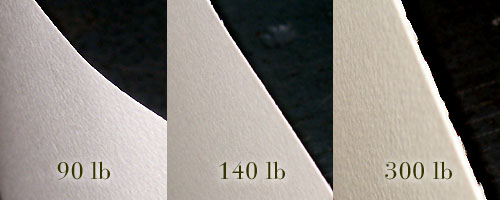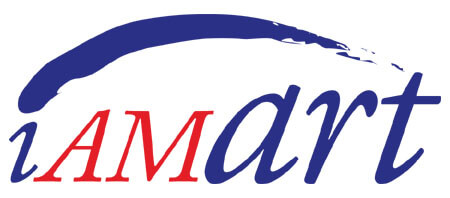watercolor paper - part 2
weights

Watercolor paper comes in a variety of styles and is generally described by its weight and the quality of its surface.
There are numerous weights of watercolor paper, measured in pounds per ream or grams per square meter. The papers that are used most frequently and most widely available are:
- 90 lb (190 gsm)
- 140 lb (300 gsm)
- 300 lb (638 gsm)
90 lb watercolor paper is closer to the thickness of heavier papers found in sketchbooks, and is most suitable for quick pieces with more sketch-like applications of paint. This lighter paper is less expensive and often used to learn and practice brush strokes and color theory.
140 lb paper is used most often for finished paintings. The weight is sufficient to handle a lot of paint and water, yet it is light-weight enough to mat and frame easily. Most watercolor paper is made from cotton, which holds up well to water, but will shrink as the paper dries. Paintings for which most of the paper surface will be covered with paint or that will use lot of water to wet the surface must be taped down or stretched before painting to prevent buckling.
Any watercolor paper weighing less than 356 gsm (260 lb) can buckle or wrinkle if not mounted. Paper of this thickness is often sold as a stacked block of pages, or “watercolor block”. To keep paper from wrinkling, paint directly onto the block and then use a palette knife or razor to remove the top layer once it has dried.
Heavier papers are obviously thicker and less prone to wrinkling and warping when used. Thicker paper can take heavier applications of paint and work better for multi-media projects. 300 lb paper is almost board-like in its stiffness and does not require taping, stretching, or mounting.
